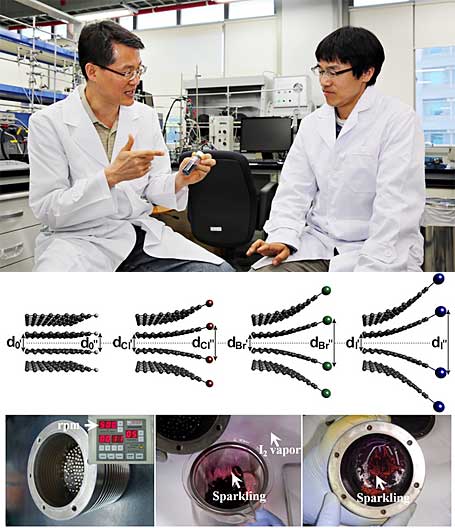
Yesterday I had talked about nitrogen doped carbon nanotubes for fuel cells which is a platinum-free invention created by the researchers at the Los Alamos National Laboratory. Today I would like to talk about how researchers in Korea, at the Ulsan National Institute of Science and Technology (UNIST), invented edge-halogenated graphene nanoplatelets for use in electrocatalysts in fuel cells.
Now, I hope your eyes aren’t watering yet, as you don’t have to be an engineer to understand that any material that replaces platinum in a fuel cell will help to drive down costs.
According to UNIST, “The research team of Profs. Jong-Beam Baek and Noejung Park of UNIST, and Prof. Liming Dai of Case Western Reserve University, for the first time, reportedly synthesized a series of edge-selectively halogenated (Cl, Br and I) graphene nanoplatelets (XGnPs) by ball-milling graphite flake in the presence of chlorine (Cl2), bromine (Br2), or iodine (I2), respectively. The newly prepared XGnPs as metal-free electrocatalysts for oxygen reduction reaction (ORR) stand as a possible replacement for platinum (Pt), which is currently the most reliable material for cathodic ORR electrocatalysts in fuel cells …
“… These novel metal-free electrocatalysts were synthesized by ball-milling at high speed rotation (500 rpm) using stainless steel balls, generating sufficient kinetic energy to cause bond cleavages of the graphitic C-C framework. As a result, active carbon species formed at the broken edges of graphite, which were sufficiently reactive to pick up halogens in the sealed ball-mill capsule.
“The resultant XGnPs were tested as cathode electrodes of fuel cells and revealed remarkable electrocatalytic activities for ORR with higher tolerance to methanol crossover/CO poisoning effects and longer-term stability than those of the original graphite and commercial Pt/C electrocatalysts.”
So, in other words, the chosen method produced electrocatalysts in fuel cells that are robust, durable and lower cost compared to FC’s that use platinum. And, if fuel cells can be mass produced using this method, then we’ll see the price of hydrogen cars come down significantly.
Great news